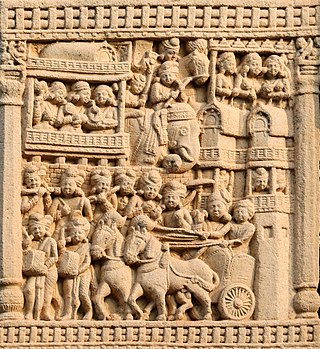Regicide is the purposeful killing of a monarch or sovereign of a polity and is often associated with the usurpation of power. A regicide can also be the person responsible for the killing. The word comes from the Latin roots of regis and cida (cidium), meaning "of monarch" and "killer" respectively.
Pedicide, child murder, child manslaughter, or child homicide is the homicide of an individual who is a minor. In many legal jurisdictions it is considered an aggravated form of homicide. The age of the victim may constitute an aggravated factor for homicide offenses, or child murder may be a stand-alone criminal offense.

Filicide is the deliberate act of a parent killing their own child. The word filicide is derived from the Latin words filius and filia and the suffix -cide, from the word caedere meaning 'to kill'. The word can refer to both the crime and perpetrator of the crime.
Parricide refers to the deliberate killing of one's own father and mother, spouse, children, and/or close relative. However, the term is sometimes used more generally to refer to the intentional killing of a near relative. It is an umbrella term that can be used to refer to acts of matricide and patricide.

Ajatasattu or Ajatashatru in Buddhist tradition, or Kunika and Kuniya in the Jain histories, was one of the most important kings of the Haryanka dynasty of Magadha in East India. He was the son of King Bimbisara and was a contemporary of both Mahavira and Gautama Buddha. He forcefully took over the kingdom of Magadha from his father and imprisoned him. He fought a war against the Vajjika League, led by the Licchavis, and conquered the republic of Vaishali. The city of Pataliputra was formed by fortification of a village by Ajatashatru.

Matricide is the act of killing one's own mother.
Uxoricide is the killing of one's own wife. It can refer to the act itself or the person who carries it out. It can also be used in the context of the killing of one's own girlfriend. The killing of a husband or boyfriend is called mariticide.
Sororicide is the act of killing one's own sister.
Mariticide literally means the killing of one's own husband. It can refer to the act itself or the person who carries it out. It can also be used in the context of the killing of one's own boyfriend. In current common law terminology, it is used as a gender-neutral term for killing one's own spouse or significant other of either sex. The killing of a wife or girlfriend is called uxoricide.
The Tochigi patricide case, or Aizawa patricide case, is a landmark father–daughter incest and patricide case in Tochigi Prefecture, Japan. The trial of the incident is also known as its common case name Aizawa v. Japan. In the incident, a victimized daughter, Chiyo Aizawa who had been sexually abused by her father for about 15 years, eventually killed him on October 5, 1968. She was accused and convicted of murdering her father, but her sentence was suspended.
A familicide is a type of murder or murder-suicide in which an individual kills multiple close family members in quick succession, most often children, spouses, siblings, or parents. In half the cases, the killer lastly kills themselves in a murder-suicide. If only the parents are killed, the case may also be referred to as a parricide. Where all members of a family are killed, the crime may be referred to as family annihilation.

Kingdom of Marwar, also known as the Jodhpur State under the British, was a kingdom in the Marwar region from 1243 to 1818 and a princely state under British rule from 1818 to 1947. It was established in Pali by Rao Siha, possibly a migrant Gahadavala noble, in 1243. His successors continued to struggle against regional powers for domination and 9 out of 15 rulers till 1438 died in combat. In 1395, its capital was changed to Mandore by Rao Chunda of Mandore and to Jodhpur in 1459 by Rao Jodha.
Avunculicide is the act of killing an uncle. The word can also refer to someone who commits such an act. The term is derived from the Latin words avunculus meaning "maternal uncle" and caedere meaning "to cut down" or "to kill". Edmunds suggests that in mythology avunculicide is a substitute for parricide. The killing of a nephew is a nepoticide.

Amrapali is a 1966 historical Hindi film directed by Lekh Tandon, starring Sunil Dutt and Vyjayanthimala as leads. The film's music was by Shankar–Jaikishan.

Manavati Bai, also spelled Manvati Bai,, better known by her title, Jagat Gosain, was the second wife and the empress consort of the fourth Mughal emperor Jahangir and the mother of his successor, Shah Jahan.

Poena cullei under Roman law was a type of death penalty imposed on a subject who had been found guilty of patricide. The punishment consisted of being sewn up in a leather sack, with an assortment of live animals including a dog, snake, monkey, and a chicken or rooster, and then being thrown into water.
Rana Udai Singh I or simply Udaikaran, was the Sisodia Rajput ruler of Mewar Kingdom. He was the eldest son of Rana Kumbha whom he assassinated to gain the throne of Mewar.
Banvir, also known as Banbeer was the ruler of Mewar Kingdom between 1536 and 1540. He was nephew of Rana Sanga, born to his brother Prithviraj and his cocunbine.









